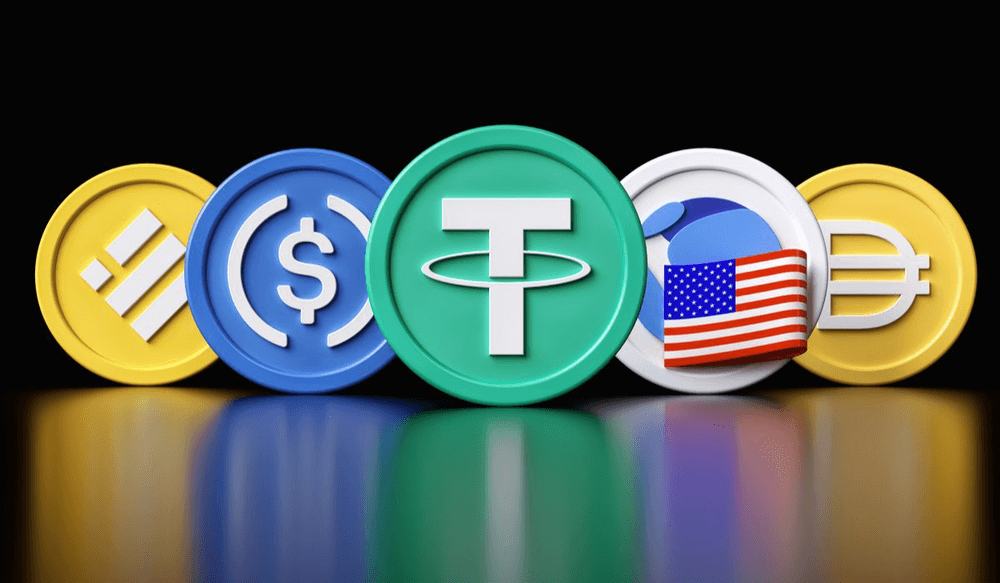

What are Stablecoins? How do Stablecoins Work?
In the dynamic realm of cryptocurrency, stablecoins have emerged as a revolutionary innovation. They bridge the gap between the volatile likes of Bitcoin and Ethereum and the steadfast reliability of traditional fiat currencies.
This article serves as your guide to the world of stablecoins, offering insights into their categories, operational mechanisms, safety measures, and the challenges they may face.
What are Stablecoins?
Stablecoins, as the name suggests, are a unique class of cryptocurrencies designed to maintain a steady value. They provide a dependable alternative to the roller-coaster price movements seen in other digital assets.

Types of Stablecoins
Stablecoins are primarily categorized into three distinct types, each employing a distinct strategy to achieve stability.
Fiat-Backed Stablecoins: Anchored in Tradition
Fiat-backed stablecoins, including familiar names like Tether (USDT) and USD Coin (USDC), are pegged to conventional currencies such as the U.S. dollar. These stablecoins preserve their value by holding an equivalent reserve of the underlying currency, establishing a sense of dependability and assurance. The safeguarded reserve ensures that every unit of the stablecoin in circulation corresponds to a corresponding sum securely held within a conventional financial institution. Recently Paypal’s stablecoin PYUSD has joined this category too.

Crypto-Collateralized Stablecoins: Leveraging Cryptocurrency Reserves
Crypto-collateralized stablecoins, represented by MakerDAO's Dai (DAI), lean on a diverse assortment of cryptocurrencies to uphold their value. To counterbalance the inherent volatility associated with cryptocurrencies, these stablecoins necessitate an overcollateralization strategy. This strategy mandates that the cumulative value of the reserve cryptocurrencies exceeds the total value of the issued stablecoins, effectively mitigating the risks tied to sudden market fluctuations.

Algorithmic Stablecoins: Stability Through Code
Algorithmic stablecoins, exemplified by Terra (LUNA) and Ampleforth (AMPL), rely on sophisticated algorithms to regulate their supply and sustain a consistent price. In contrast to the traditional collateral-based approach, algorithmic stablecoins dynamically adjust their circulating supply based on market demand and supply shifts. This adaptable equilibrium strives to achieve price stability without leaning on conventional reserves.

Unfortunately for investors the crash of Terra (LUNA) has raised serious concerns about algorithmic stablecoins.
Advantages of Stablecoins
Stablecoins offer a lot of advantages and there are many uses of stablecoins within the cryptocurrency ecosystem:
Medium of Exchange:
Stablecoins furnish a dependable medium for transactions without the worry of market volatility.
Store of Value:
Amidst the market's inherent volatility, stablecoins serve as a steadfast and secure store of value.
Global Transfers:
Stablecoins expedite swift and cost-efficient cross-border transactions, particularly in regions marked by unstable local currencies.
Decentralised Finance (DeFi):
Stablecoins form an important part of DeFi protocols, enabling activities such as lending, borrowing, and yield farming.
Safety and Regulation of Stablecoins: Navigating Ambiguity
The safety of stablecoins depends on their type and underlying mechanisms. Fiat-backed stablecoins, supported by conventional reserves, offer a degree of security. Nevertheless, they have their own challenges linked to transparency, operational credibility, and adherence to regulatory standards. Leading regulatory bodies, including the International Organization of Securities Commissions (IOSCO), advocate robust regulation to ensure the stability of stablecoins and their potential impact on financial systems.
Risks of Stablecoins
While stablecoins do have their advantages there are also some risks associated with them.
Regulatory Scrutiny:
Regulatory authorities are closely monitoring stablecoins due to concerns surrounding potential disruptions and opacity.
Market Trust:
The credibility of certain stablecoins, such as Tether (USDT), has been cast into doubt due to uncertainties about their backing.
Algorithmic Complexity:
Algorithmic stablecoins encounter difficulties in maintaining their peg during market turmoil, evident in the sudden drop of Terra (Luna) or UST.
Conclusion:
In the ever-transforming domain of cryptocurrencies, stablecoins emerge as a promising remedy to market volatility by blending stability and innovation seamlessly.

As the cryptocurrency community continues to navigate regulatory frameworks and refine technological paradigms, stablecoins stand poised to redefine financial transactions, cross-border remittances, and the landscape of decentralised finance (DeFi). Although challenges remain, stablecoins represent an exciting evolution with the potential to modify the future of digital finance.
(If you liked our article, Check out our other article on DCMA's CBDC, UMU.)
Image Credits: PYMNTS; Bankrate; WikiMedia; Asia Crypto; BitPay
